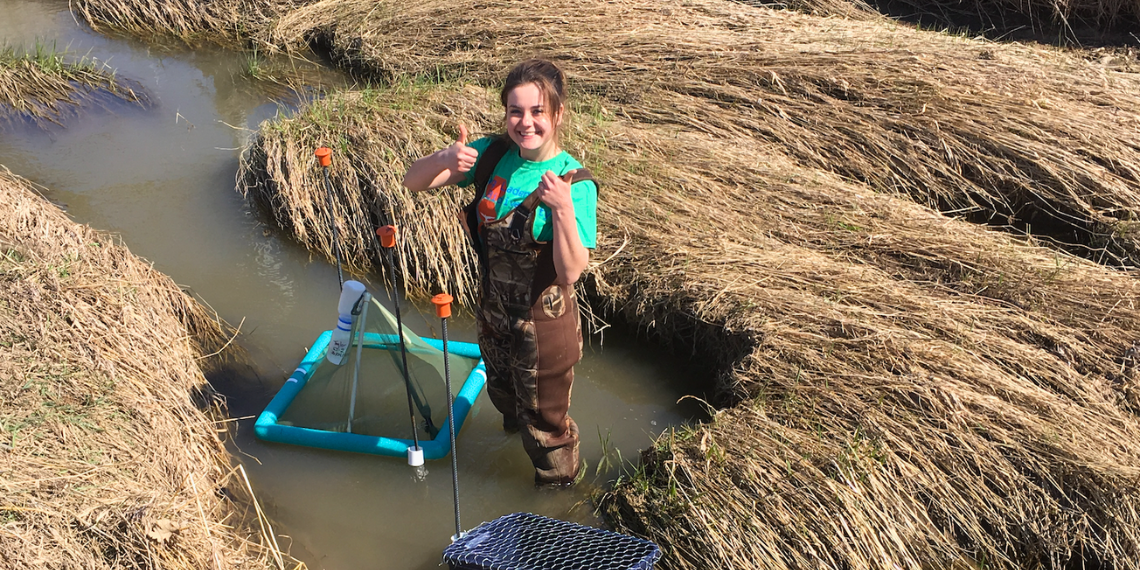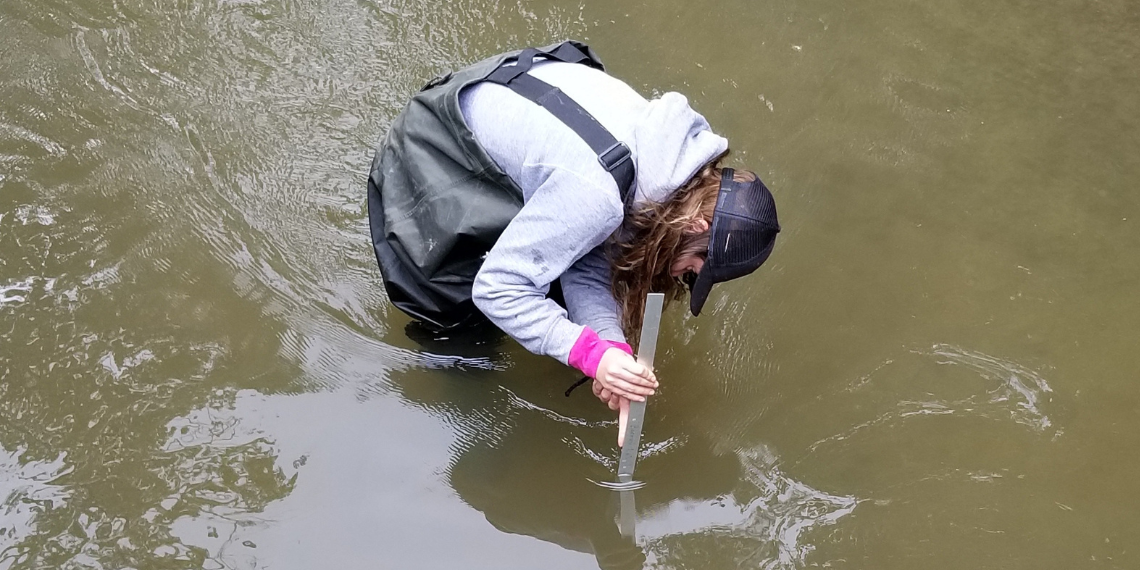How Agriculture Reshapes Stream Food Webs Across Seasons

Most of us remember learning about food webs in school – the complex networks that show who eats who in nature. These connections are more than just classroom diagrams; they play a key role in keeping ecosystems stable and functioning, supporting everything from water quality to fish populations – and even humans.
In temperate stream ecosystems, seasonal changes help shape dynamics (who-eats-who) within these food webs. For example, in summer and fall, fish and small insects in streams often feed on resources from surrounding land – like falling leaves from nearby trees and shrubs. In winter and spring, when these leaves are less available, these organisms switch to food from within the stream like algae or aquatic invertebrates. This seasonal flexibility in diet helps keep stream food webs stable throughout the year.
But what happens when land use, such as agriculture, alters the availability of these resources?
That’s the focus of a new study led by Dr. Marie Gutgesell and Dr. Kevin McCann from the Department of Integrative Biology, recently published in FACETS. The researchers investigated how agriculture affects the balance between terrestrial and aquatic food sources across seasons in stream food webs within the Lake Erie watershed.
“Agriculture is transforming stream ecosystems in complex ways,” says Gutgesell. “We wanted to understand how these changes affect the seasonal patterns of who’s eating what in stream food webs.”

The research team studied three stream sites in the Lake Erie watershed across a gradient of agricultural impact, from a low-impact protected site to a high-impact site surrounded by intensive farming. At each site, the research team collected seasonal samples to assess fish diet sources, body sizes and food web structure.
At the high-impact site, results showed fish fed less on terrestrial resources (such as leaves) and relied more on aquatic sources such as algae and aquatic insects. This shift was accompanied by an increase in smaller-bodied fish and more omnivory (that is, more fish are eating both algae and aquatic insects, rather than just insects).
“These patterns suggest that intensive agriculture may ‘rewire’ food webs toward greater dependence on aquatic resources,” says Gutgesell. Importantly, the study offers early evidence that agricultural intensity can alter the way organisms use resources seasonally, which may have implications for food web dynamics over time.
Interestingly, the mid-impact site, which retained more vegetation areas such as riparian buffers, displayed more balanced resource use across seasons, resembling the low-impact site in food web structure. This suggests that certain land management practices, like maintaining or restoring streamside vegetation, may help mitigate potential impacts of agriculture.
“Riparian zones seem to play a key role,” says Gutgesell. “Maintaining or restoring streamside vegetation may help preserve both terrestrial and aquatic resource pathways, supporting more resilient food web dynamics even in agricultural landscapes.”
Ultimately, this study highlights how local land use decisions can influence ecological processes. While more research is needed to generalize the findings, especially across different regions and time frames, the work points to riparian management as a promising tool to sustain stream ecosystem function in working landscapes.
This study was supported by a Food from Thought grant at the University of Guelph funded by the Canada First Research Excellence Fund.
Read the full study in the journal FACETS.
Read about other CBS Research Highlights.